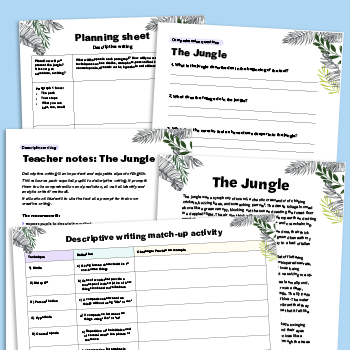Whole-school literacy strategies – What can schools do to ensure they succeed?

Between time constraints and complex subject demands, improving whole school literacy standards can be an uphill struggle – which is why it’s best to tackle one area at a time, advises Alex Quigley…

- by Alex Quigley

Everyone recognises the crucial importance of literacy, but too few recognise that our best laid plans to develop whole school literacy typically fail.
Why does whole school literacy routinely fall down? The problem of how to support struggling readers and writers in secondary school is simply so complex and multifaceted, that it often proves too difficult to resolve.
Any given student may have problems with spelling, handwriting, reading complex curriculum texts, extended writing, using academic vocabulary, and much more. Not only that, but such individual issues are also subtly interrelated, and not always easy to diagnose using our standard assessment tools.
And so it is that busy teachers will press on, while too many students lose motivation and struggle to access the curriculum.
Too little time
To help illustrate some of the causes behind whole school literacy struggles, let’s meet Adam. Throughout KS3, Adam has struggled to read the daily texts in most subjects – from worksheets in science, to Shakespeare passages in English. With effort, he would wade through academic texts, reading robotically word for word, before tripping over the trickiest terminology.
Given his slow, effortful reading, Adam doesn’t have the time or mental bandwidth to write and think fluently. His ability to simply navigate the school curriculum is compromised by his inability to read and write at age-related expectations.
So where should we start with Adam? We may need to identify high quality interventions that improve his reading fluency. He may need each of his teachers to carefully calibrate the texts they share with his level of understanding – but in order to do so, those teachers will likely need ample professional development on how to best utilise timely literacy strategies for students like Adam. The challenges soon stack up.
We’re left asking why whole school literacy initiatives often struggle and fail students like Adam, but the answer is clear: the issues are too complex, and there’s too little teacher time to address them. The only viable solutions are likely too generic and superficial to satisfy Adam’s needs in every classroom.
Disciplinary literacy
Many secondary teachers who have previously sat through whole school CPD sessions on literacy will complain that they haven’t impacted on their practice. Too often, when it comes to literacy training, school leaders will resort to strategies like marking policies that centre on correct spelling and polished presentation to keep things simple for busy teachers.
Such strategies aren’t necessarily flawed, but will do little to improve Adam’s access the school curriculum, since a marking policy won’t teach him how to correct his spelling or write more accurately.
It’s more helpful to make whole school literacy initiatives more subject-specific – an approach termed ‘disciplinary literacy’. The Education Endowment Foundation guidance report, ‘Improving Literacy in Secondary Schools’ describes it thus:
“Disciplinary literacy is an approach to improving literacy across the curriculum. It recognises that literacy skills are both general and subject-specific, emphasising the value of supporting teachers of every subject to teach students how to read, write and communicate effectively.”
In practical terms, this helps reveal an important truth about literacy – that reading, writing, and speaking like a mathematician has some parallels to literacy development in history, but that there are also some important differences.
When reading a multi-step word problem in maths, for example, it’s necessary to re-read the question carefully, but you don’t need to think about the question’s author. In history, you’ll similarly need to re-read the question, but also think hard about any authors and sources it cites, corroborate their claims, consider their reliability and more.
Trending
When we adapt whole school literacy to ‘disciplinary literacy’ we broadly gain favour with subject teachers, but also make our approaches more precise, purposeful and better matched to the specifics of the subject curriculum.
Working on writing
We can reduce the likelihood of whole school literacy failing by focusing more deliberately on disciplinary literacy. This will likely win over busy teachers, since it more accurately addresses the issues of curriculum access they may be seeing in their classrooms. That said, we’ll typically need to go one step further and shrink the ‘disciplinary literacy’ issue too.
Whole school literacy should involve a concerted shrinking of the problem we’re seeking to solve. Let’s consider some of the literacy issues students like Adam will routinely exhibit.
There will be weak writing organisation, with extended writing that isn’t coherent or sustained. Complex, subject-specific vocabulary will be regularly misspelt. Teachers will see Adam produce persistently awkward sentence structures and demonstrate slow, dysfluent reading in the classroom. He will appear to have background knowledge gaps when reading informational texts.
From these, we can cluster an approach to writing and ‘disciplinary literacy’, thereby addressing the ‘weak writing organisation’, ‘misspelling’ and ‘awkward sentence structures’ issues. By focusing more narrowly on writing, we can offer a more pragmatic approach to disciplinary literacy that just might work.
Digging into the research evidence indicates that mastery of handwriting and spelling should come first, which will then produce a positive knock-on for students’ planning skills and organisation of writing. From here, it’s a good bet that we should then prioritise solving ‘misspelling’.
High quality spelling instruction goes beyond spelling lists or weekly tests, but each subject can start with identifying common misspellings of high frequency subject vocabulary. We can single out particular strategies, such as teaching morphology (word components like ‘photo-’ and ‘epi-’ in science, for example) or getting students to compile an annual ‘spelling inventory’ of their own misspellings.
Narrow the challenge
Having initially shrunk our ‘whole school literacy’ improvement down to just spelling, we can then move on, a couple of school terms later, to writing brilliant sentences. Professional development at this stage could cohere around ‘sentence combining’, ‘sentence expanding’ and similar, so that pupils, across all subjects can learn how to master academic sentences.
We can, for example, attend to disciplinary literacy by focusing on ‘so that’ sentences in design technology, or how ‘sentence signposts’ can be used in history to help build an argument.
For students like Adam, there will be no quick fixes to long-standing literacy issues, but we can narrow the challenge down to improving his writing first of all, starting with his spelling. Each step thereafter will then prove to be meaningful and manageable – for Adam and his busy teachers alike – thus giving the whole school literacy efforts at his school a chance to succeed, against all the odds.
Alex Quigley (@AlexJQuigley) is a former teacher, now National Content Manager at the Education Endowment Foundation, regular Teach Secondary columnist and author of the recently published Closing the Writing Gap (£16.99, Routledge)
TS readers can claim a 20% discount when ordering a copy here by quoting the code CWG20










